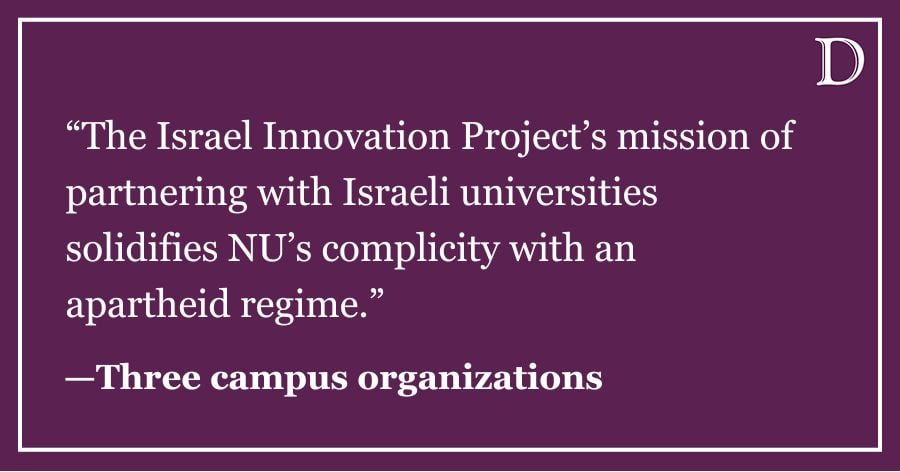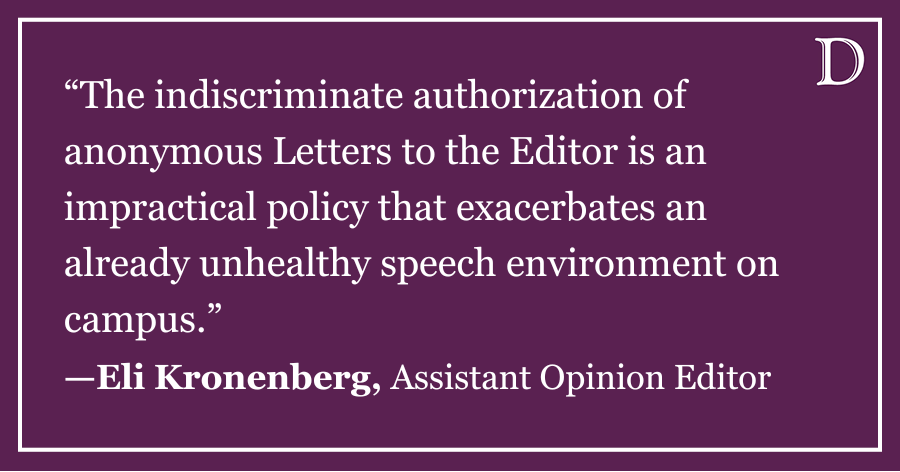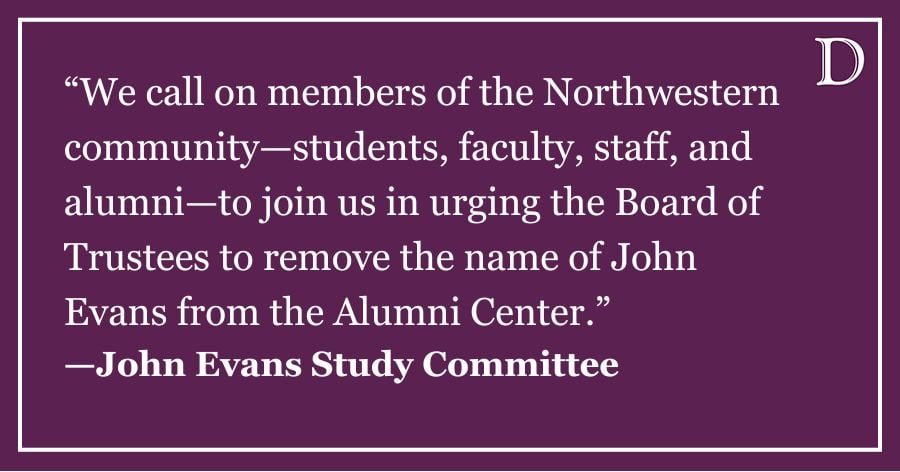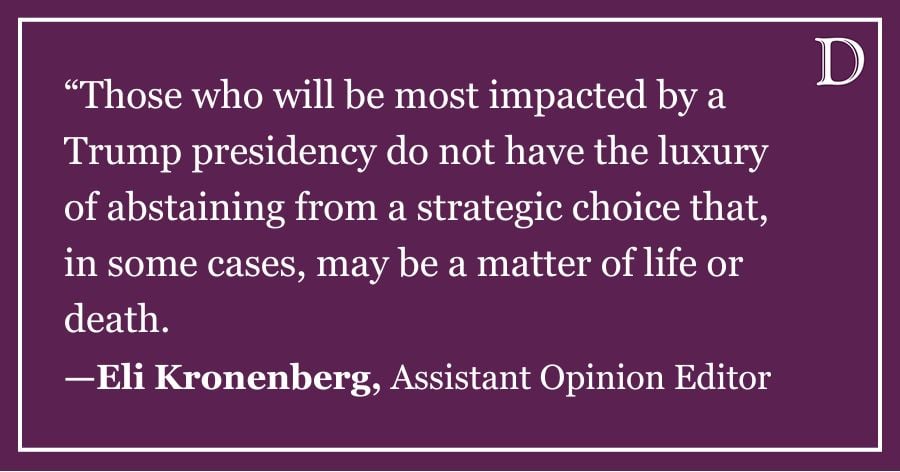“It was the sincerity of hurt that you could see. You could see the pain on his face on what he had experienced.”
It’s the raw emotion that resonated with McCormick senior Ben Shorofsky as he remembered the Ski Team’s conversation with Weinberg senior Kellyn Lewis following last weekend’s Beer Olympics.
In an interview early Wednesday morning, Shorofsky noted that team members realized they had perhaps gone too far with costume ideas for their event, yet no one stopped to seriously question what was happening.
Some participants saw it as objectionable, he said. “The difference is that no one stood up and stopped it… No one said, ‘You need to go home and change.’ That falls on us. We as leaders of this team should have stepped up.”
And following dialogues with Lewis and other concerned students, they have. Since last weekend’s events, the Ski Team has accepted responsibility for their actions and participated actively in student organizing for diversity initiatives. In fact, members of the team made their presence known at an open forum during Wednesday night’s ASG meeting, with Ski Team president Matt Dolph reiterating the team’s remorse and commitment to diversity.
During an impromptu yet pivotal moment during the ASG meeting, Weinberg sophomore Tony Guerrero asked students in attendance to take a five-minute break during the ongoing discussion to get to know and speak with one another. In those discussions, some students remarked that moments like these were intellectually stimulating and even eye opening. One student even said it allowed him to engage in something that was difficult to understand beforehand.
While those five minutes were relatively brief, the effect it had on the remainder of the dialogue was clear.
Before, the tone was pointed almost exclusively toward frustration with the administration, and Vice President of Student Affairs Patricia Telles Irvin for not answering student questions following her initial statement. But the change occurred once attendees had a moment to engage in dialogue and work toward relating with one another.
SESP sophomore Diamond Greer remarked to the group that discussions like these are often tense for reasons not immediately understood between parties of different views and social locations.
“You have some who have been talking about this their entire lives, and you have some who don’t understand this immediately,” she said while stressing the need for cooperative dialogue between students. “We won’t get anywhere with anyone in this University at all because we’ll be exclusive in our groups and as a University on campus.”
And that’s something many students began to realize as the evening progressed. In many ways, students on this campus interact within a variety of cultural silos.
What’s often missing from these discussions is the understanding that diversity comes from a variety of channels that aren’t mutually exclusive. Diversity issues should be examined from many viewpoints of identity; something many students expressed in frustration with a seemingly narrow focus on racial/ethnic diversity during the forum.
And in these dialogues, more often than not, parties fail to recognize that racism, sexism, or other “isms” do not occur independently of one another, but interact simultaneously. Often, people get lumped into being only “white” or “black” or a “woman” by others while discussing experiences of discrimination. And that’s even when that individual may have other layers of identity, like class or sexual orientation, simultaneously shaping their experiences with privilege and marginalization.
That’s the idea behind what’s called “intersectionality.” It’s a sociological theory developed by Kimberle Crenshaw, a law professor at University of California, Los Angeles and Columbia University, as a lens to view social inequality.
In an informational document released by the African American Policy Forum, which Crenshaw co-founded, it says that a silo-oriented structure of social justice mobilization “can frequently be ineffective and even sometimes lead to unnecessary conflict within social justice movements.” In many ways, certain “isms” (so to speak) work together to limit access to resources in society like employment, housing, citizenship and even education.
Historically, many of those same “isms” worked to exclude people here at NU. That includes women and many ethnic and cultural minority groups, and involved strict quotas set for African Americans and Jewish people. Even when allowed attendance, many of those students who came before us were excluded from campus housing and Greek organizations, among other social and tangible benefits of campus life.
Before you accuse me of “race baiting” or “whining,” that’s not at all what I’m doing in highlighting the history of this institution. This isn’t an attempt to throw the past up in anyone’s face, as some accuse students of doing when discussing incidents like blackface, Muhammad chalkings and other displays of deficient cultural competency on NU’s campus.
When students cite the histories, the realities of oppression that date back for decades, they mention them as a way to explain how our community has arrived to its current condition. They mention them while attempting to be understood by those who may not understand or simply refuse to do so. Many of these students, from all walks of life, have lived through experiences of marginalization in many forms. And so have I.
So when some students hear events like the Beer Olympics being dismissed as “not racist,” it automatically triggers outrage and even disappointment. On the inside, one might ask, “How can this person not understand why their statements or actions are disrespectful?” or “Why can’t they acknowledge how this incident validates systems of inequality that exclude people like me?”
To be fair, students on the other end of such a discussion may not understand where the outrage originates. Perhaps it’s because they don’t share a common experience of having their identity or culture marginalized via slurs, offensive costumes or unfair legal treatment. But when someone doesn’t understand something in a classroom, questions are encouraged. Yet many of us haven’t been able to do that with one another in an honest, respectful dialogue.
Thinking with intersectionality in mind from the start, we can more easily ensure that people engaging in dialogue from different social locations identify their common causes much more clearly and unite for progress. And in order to live that out, it all comes down to practicing one thing: human empathy.












